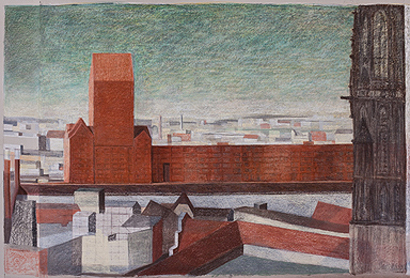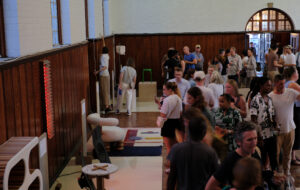|
With this year’s Venice Architecture Biennale about to kick off, here is an article from 2012 in which the last Biennale director David Chipperfield talked about his plans for the festival |
||
|
ICON Can you explain this year’s theme of Common Ground? David Chipperfield The theme is really an attempt to search for the collective in architecture. It’s a provocation, in a way, to the recent views where architects have been presented and present themselves as stars and isolated talents, as if they’ve been born fully formed and perfect geniuses, independent of influence and just polishing their craft. I don’t think that’s true, I think they all come out of a soup, which one might call architectural culture. I don’t think we give enough articulation to that culture. I don’t think we acknowledge it, and we don’t voice it. That may be okay for the participants, but I don’t think it’s a good lesson for students or the general public. So I think it’s a good opportunity for the profession, you know, to front up to the reality and say: “No, I was very influenced by this architect” or “I’m interested in … ” Maybe Zaha is not exactly my architect, but I’m sort of interested in what she does. You know, why not? I would like, then, each architect to show what their ideas are, more than polish their product and put it on a stool. ICON Have you participated in previous Biennales? DC I have, yes. I was in the British pavilion 10 years ago or so. I think there was a show with five of us. Who else was there? I think Will Alsop was in it, Nigel Coates, me … we showed a number of projects. And then I think in Deyan Sudjic’s we had a project, and I think in Ricky [Burdett]’s I also had something. ICON And what is the significance of the Biennale event for you? DC Well, I think it’s a meeting of the tribes in a way. The drums beat and all the tribes pick up their tents and go to Venice for three or four days, which is a complete circus for that moment. But I think that moment is a very interesting social one, one where lots of dialogue happens informally and formally, sober and less sober – it’s a very good moment. And then, of course, it is something that does go on for three months. ICON You spoke once about how the curatorial role was a little like being an alchemist – you put everything in the cauldron and let it bubble away. What are your ambitions for the Biennale? DC My expectations at the moment are very, very low. I just want to get to 27 August in one piece without losing too many friends! I’m just trying to control the experiment and hope that this doesn’t fall flat. You know, it is a dangerous thing in such a scenographic place, an exhibition of such scale, there is a danger that the right idea might not necessarily give the right result. So I think we’re all confident that the concept is clear, and the thematic is clear, and everyone participating likes this. Can it produce enough substance and superficiality, in a way? I mean, I think this has to be a balance of profundity and superficiality. ICON How does the selection process work? DC You know, the normal thing: prejudice! No, we tried to deal with the smallest group possible to start with. And again, not friends and relations, but sort of ideas and what people represented generationally, conceptually. I tried to make it as broad a choice as possible, and then to see whether that might, you know, expand out. ICON And is Britain particularly well represented in this Biennale? Seems so. DC I think there’s quite a few. One of the newspapers did a big thing saying, “The Brits are coming”, which didn’t help me in Italy. But we’ve tried to keep a balance. I think Switzerland is probably represented more than most. Why? Because Switzerland is a place architects can practice with more support than they can in … Italy struggles because it’s the worst place in the world to be an architect. ICON You’re building the House of the Dead on the Venetian island of San Michele – that project’s ongoing isn’t it? DC It’s ongoing, as every project in Italy is. We’ve been working on the cemetery for 10 years and we’ve built one courtyard so far. But I’m reassured – as I am every year they build – that the next phase will happen this year. Actually, starting this summer. By the time of the Biennale, ground works will be going on. But at the same time, we’re restoring the first courtyard, which we built three years ago. On the basis that we’ve built one courtyard in 10 years, it’ll take another 350 years to complete!
image David Chipperfield
image FAT’s Venice Villa Concept
image Aga Khan Development Network’s Historic Cities Programme
image Ortner & Ortner’s Dust Pictures Series |
Words Christopher Turner
Image Justin McGuirk and Urban Think Tank’s concept image |
|
|
||






















